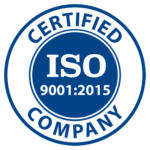The Down and Dirty:
Grease Components
A Primer on What Makes Grease—and What Makes It Good
What Is Grease?
Grease is a semisolid lubricant with thickening agents and additives—other ingredients that impart special properties also may be included (see below). Grease acts as a sealant to minimize leakage and keep out contaminants.
Without getting in the weeds, what makes a grease good? It must reduce friction, prevent wear, create a seal to prevent as much contamination as possible, and also protect against rust.
Why Do Grease Components Matter?
- Base Fluid: 50%-95% of the formulation (Most are made with Mineral Oil, unless there are temperature extremes, then most likely a synthetic base oil will be used)
- Thickeners: 3%-40% (Lithium, Lithium Complex, Calcium Sulfonate, Aluminum Complex and Polyurea are the five most widely used)
- Additives: 1%-15%
Popular Additives
Anti-Wear
This works to form a protective film to keep metal components from wearing as they make contact. The additives chemically react with the metal surfaces to protect the surfaces from wear, corrosive acids, and oxidation of the base oil.
Antioxidants
These prolong the life of the grease when operating at high temperatures, since oxidation (when oxygen breaks down a base fluid) is accelerated at higher temperatures. Antioxidants also allow the lubricant to operate at higher temperatures than would otherwise be possible.
Viscosity Modifier
This compensates for variable temperature changes. For example, engine oils need good viscosity (a measure of a liquid’s resistance to flow) in a wide range of temperatures and environments. Including viscosity modifiers helps protect parts in a high temperature engine and ensures engine oil pumpability in cold climates.
Corrosion Inhibitor
This can help protect against humidity, water, contamination, and high temperatures, which are all among the leading causes of corrosion. This type of additive reduces or eliminates internal rust and corrosion by neutralizing acids and forming a chemical protective barrier to repel moisture from metal surfaces.
Molybdenum Disulfide
That is a mouthful. In the industry it is simply called Moly. This additive has the durability to withstand heat and extreme pressure, so it works well for shock and heavy loads like in agricultural or construction equipment.
PTFE
This is short for Polytetrafluoroethylene, but PTFE is much easier to say. Though expensive, it offers superior lubrication and has outstanding high and low temperature capacity. Something extra special is that PTFE is effective on metal on metal, or metal on plastic applications.
Color/Dye
Yes, there are pretty options, but color is purely for aesthetic purposes. The color of a grease has no bearing (pardon the pun) on its performance. We have even seen hot pink multi-purpose greases!
Want to learn more? A Pack Logix expert can help you choose the grease that is best for your needs.
What Should You Consider in a Grease?
- Where the grease will be used: This includes both the operating system and the industry. The grease that works well in a lawnmower may not be the same one that works on an assembly line where machine parts may come in contact with food.
- How it will be applied: Is this grease for drip, immersion, or manual application?
- What conditions it will face: Is it hot and humid in the manufacturing plant, like grease needed for pneumatics inside of tire manufacturing plants?
- What the grease will be doing: Will it be coating ball bearings, pumping through an engine, greasing open gears, etc.? Is it for industrial or even consumer use? The type of use will help decide the best kind of grease for the job.
- What elements will degrade it in the field (environmental factors): Will the grease be used in a cold temperature environment, or one with lots of vibration? A different grease would likely stand up to those elements than would work for wet or humid conditions.
How Pack Logix Can Help
- Standards: Our commitment to quality runs deep. From the stringent requirements of ISO 9001, to robust on-site lab testing to exceptional safety standards, we take pride in our commitment. We perform in-house testing of lubricants at different points in the production cycle to confirm validity and purity. You can trust your items will receive the highest quality handling and packaging, so your customers will be satisfied with the end product.
- Capabilities: With over 70 years of experience working with high-caliber products, we understand the unique conditions and quality requirements of lubrication packaging. We’re recognized as the industry’s quality-driven contract packager of oils, lubricants, greases, fluids, and specialty products. Pack Logix also has the grease filling equipment and packaging to make your brand stand out, from squeeze tubes and cartridges to drums and bag in a box.
- Staff: Our experienced staff are here to meet the changing needs of the grease industry. We have two locations: lubricants are based out of Waukesha, Wisconsin, and kitting and contract assembly services are housed in our distribution center in Milwaukee.


